MRI Guided Focused Ultrasound Centre
MRI Guided Focused Ultrasound Centre ExAblate 2000
in Thomayer University Hospital
MRI guided focused ultrasound surgery is a new non-invasive method intended mainly for uterine myoma treatment. It thus represents an alternative to hysterectomy, myomectomy and uterine artery embolization.
Uterine myomas are the most frequent tumours in women of reproductive age. According to various authors, uterine myomas can be diagnosed in 20-40 % of women and their incidence increases with age.
As the age limit of family-planning women has moved up to the fifth decennium, the requirement to treat the mentioned disease conservatively is still more and more frequent. In addition to reproductive capability preservation, the conservative approach does not put the woman out of her usual social and economic life for a long time.
Symptoms
- Heavy and prolonged menstruation
- Irregular uterine bleeding
- Lower abdomen pain and sense of fullness
- Pain during intercourse
- Frequent need to urinate
- Impossibility to conceive or bear the full term
ExAblate 2000 is a unique combination of two devices – magnetic resonance imaging and high-intensity focused ultrasound. This combination allows uterine myomatosis treatment without surgical intervention, i.e. in a non-invasive way.
Principle of the method
The method uses high-energy ultrasound waves that cause irreversible thermal tissue damage. The waves are focused, i.e. targeted to a small amount of tissue.
Magnetic resonance ensures correct waves focusing and temperature monitoring in the treated tissues during the whole intervention.
 |
Clinical applications
Uterine myomas are the main therapeutic indication for which the method has obtained registration both in Europe and the USA.
Bone metastases therapy has also been elaborated quite well.
Non-invasiveness, quick onset of analgesic effect, absence of ionizing radiation, and possibility of repeated therapy are the main advantages of the method.
Certification:
DIN ISO 9001 (since 2002)
CE-certification (since 2002)
FDA approval for uterine myoma treatment (since 2004)
ECR Certificate (March 2010)
How does MRgFUS work?
Therapy consists of several ultrasound ablations.
On a magnetic resonance image, the physician marks the target tissue to be focused. ExAblate counts the tissue volume and divides it into individual points that are then targeted one after another. During the thermal destruction (ablation) of each point, the region is scanned repeatedly in 3-second intervals and monitored to avoid any movement, i.e. erroneous focusing of the ultrasound beam during the intervention.
At the same time, focus temperature is monitored by magnetic resonance (MR) to reach the tumour destruction but to avoid damage of the neighbouring organs.
The tissue is gradually heated to 60 – 90°C when human tissues are damaged irreversibly. Due to this coagulation necrosis, the myoma volume is gradually reduced within several months and the complaints subside.
What are MRgFUS advantages?
- Uterus preservation, i.e. preservation of the possibility to conceive and give birth to a child
- No surgery
- No general anaesthesia
- No pain
- Quick return to normal life
- Out-patient intervention – maximum 1-day hospitalization
- Symptoms remission within 3 months in 90 % of patients
What are the potential MRgFUS adverse reactions and complications?
Adverse reactions are very rare; the complication per cent is <3.
- Abdominal pain/cramps, leg pain, backache
- Nausea
- Fever
- Skin burns
- Neighbouring organ burns
- Vaginal discharge or blood spotting
- Allergic reaction to the contrast medium
- Blood pressure decrease or faints during or after the intervention
Who can be treated by MRgFUS?
MRgFUS therapy is suitable for patients with complaint-causing myomas or myomas larger than 4 cm.
The basic decision about the therapeutic option is made by FUS centre gynaecologist.
If MRgFUS is chosen, the indication is always detailed through cooperation of FUS gynaecologist and radiologist. The patient’s wishes are of course taken into account, if possible.
The definitive indication of MRgFUS intervention is determined on the basis of magnetic resonance examination in MRgFUS centre in Thomayer University Hospital in Prague.
Absolute therapeutic contraindications
- Cardiac pacemaker
- Cochlear implant
- Allergy to the contrast medium
- Suspected malignant uterine disease
- Pregnancy
- Gynaecological inflammation
- Claustrophobia
- Body weight >110 kg (limited by the table bearing capacity)
Links:
product websites: www.insightec.com
informational websites about uterine myoma treatment: http://www.uterine-fibroids.org/

 menu
menu
